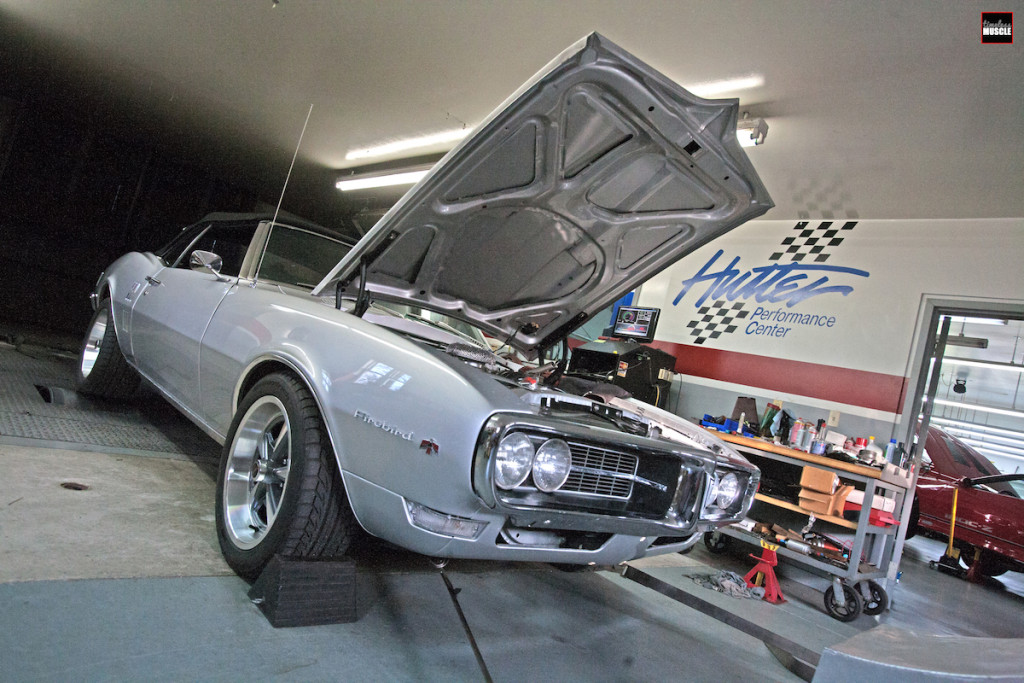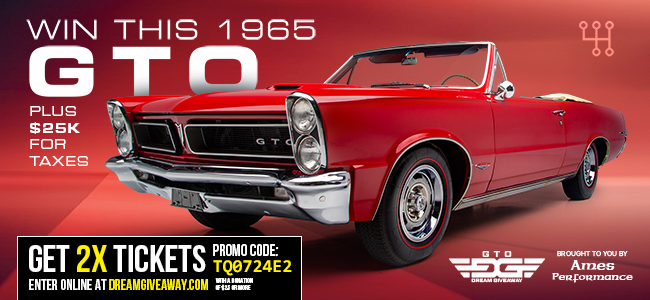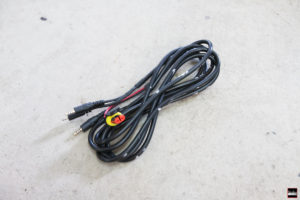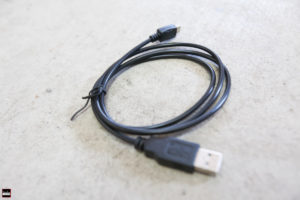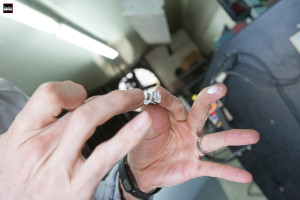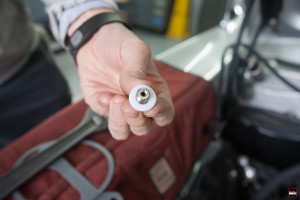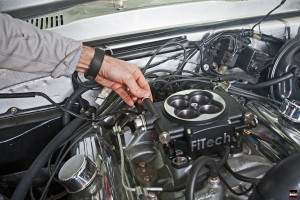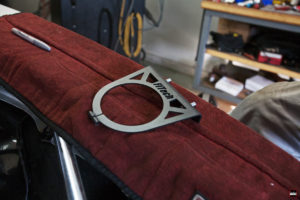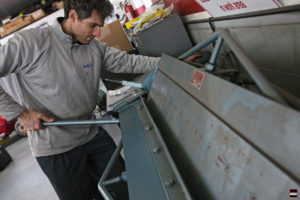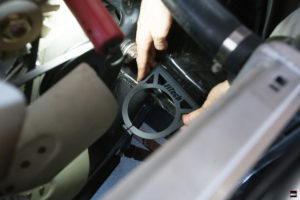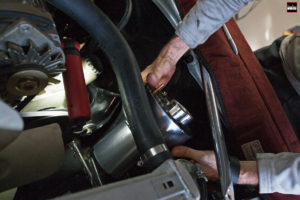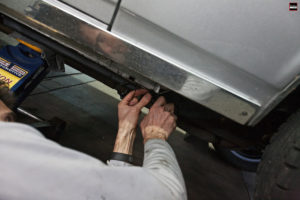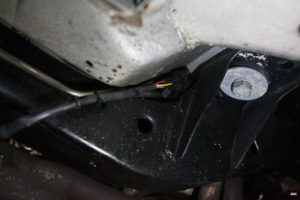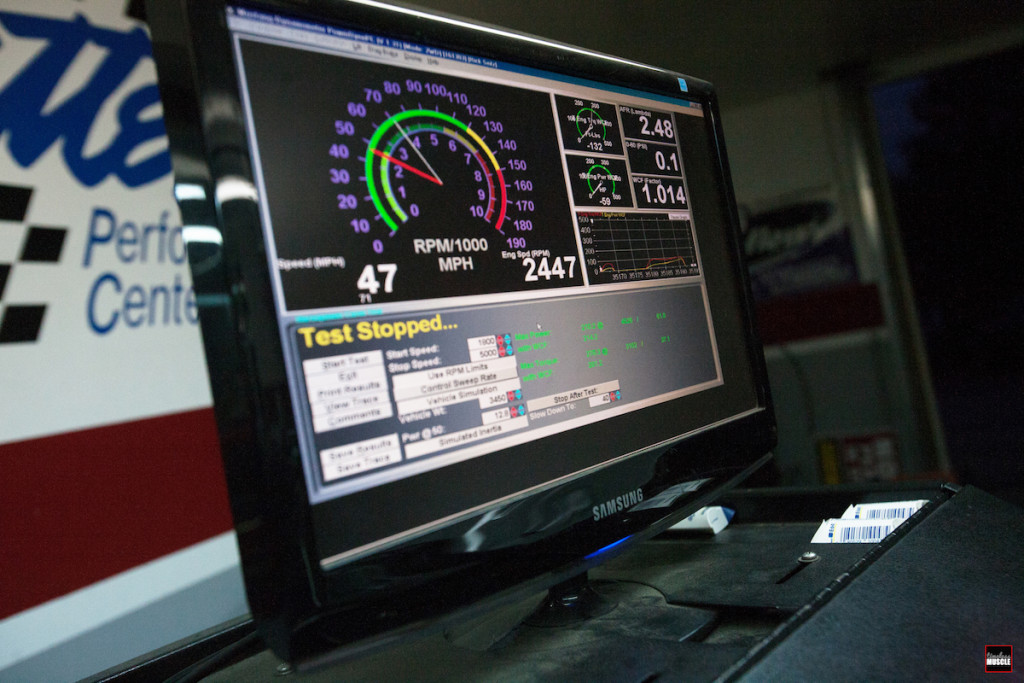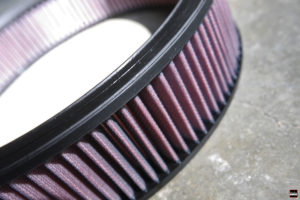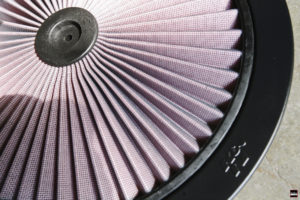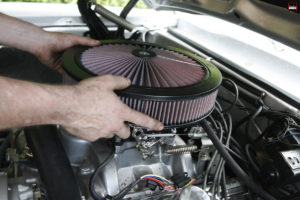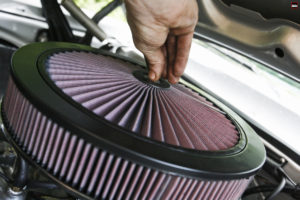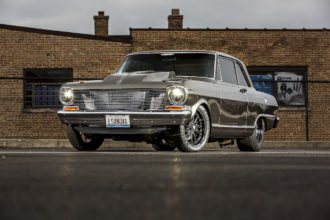photos by: the author
Making Project ReDo More Efficient by Way of FiTech’s EFI Kit
Our recently-launched ’68 Firebird project car, Project ReDo, has a lot of great hardware in store for it in the coming months, but before we look to upgrade the suspension, brakes and other aspects of the car, our top priority at the moment is to improve the drivability, reliability and fuel consumption of our project. More power and torque, of course, is always a good thing as well.
There are several ways we can go about this, but the one that has been catching our attention and interest as of late is to convert our carbureted setup for something a bit more “today.” We could of course go the obvious route, and just swap in an LS powerplant, but to spare us from getting stoned by the purists and not to jump on a cliche, we elected to go with an aftermarket EFI system.
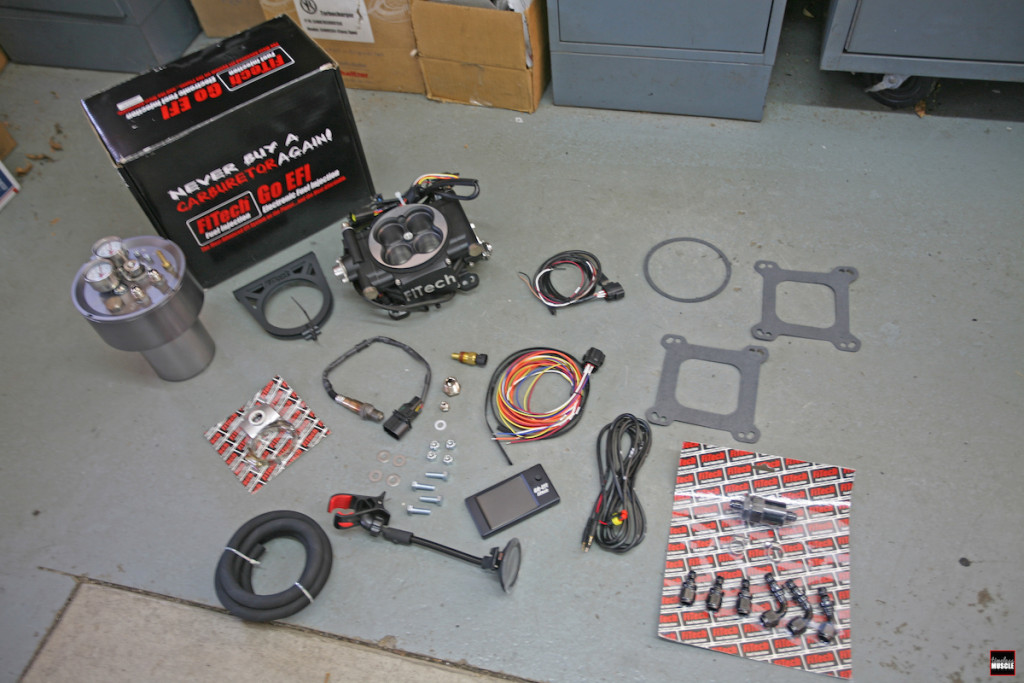
Here’s the complete kit, as unpackaged from FiTech. It comes complete with all of the necessary hardware, gaskets, sensors, throttle body, handheld controller, controller mount, weld-in O2 sensor exhaust bung, and in our case, the FiTech Fuel Command Center (PN-0003).
Now with several different kits that are currently on the market today, there was something about the FiTech system that caught our attention. First, was its impressive and high-quality design. For a kit that’s relatively new to market by a company that’s only until recently was largely unheard of, we felt that it deserved a closer look.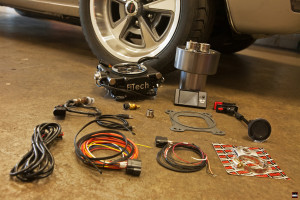
Since our Timeless Muscle offices are located right down the street from our friends at Pace Performance, who has become a dealer for FiTech EFI kits as of late, we ordered up FiTech’s 30012 kit, along with its Fuel Command Center kit (PN-4003).
Helping us install the system, as well as providing before and after dyno feedback, is Trevor Hutter of Hutter Performance. Trevor and his team are a staple in Northeast Ohio, and their core customer are usually the late-model GM EFI , although they get a steady stream of carbureted classic muscle cars. They’ve installed their fair share of aftermarket EFI kits into these cars, too, although this was their very first go at installing a FiTech system.
With an in-ground Mustang dyno at our disposal as well as a fully-equipped shop with a very talented staff, we were very optimistic about the outcome of the install. Now we weren’t looking for huge power gains from this kit, however, with a more efficient fuel system in place of our current setup, we were more interested in the improvements in overall drivability and cold start operation.
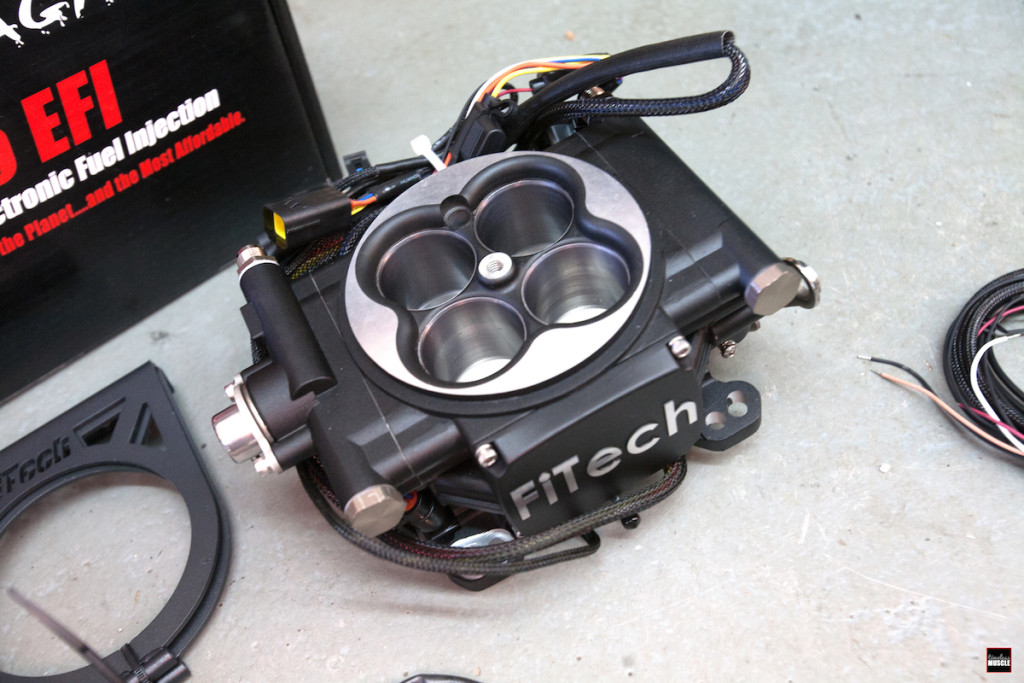
The FiTech throttle body kit is available in various finishes (matte or tumbled) and two different fuel injector counts (either in 4 or 8). We opted for the matte finish with eight total injectors; two in each port. This is Part Number 30012. Our particular model is rated for fuel/air flow capabilities up to 600 hp!
- The kit also included wiring harness…
- …fuel line…
- ..and a USB dat com cable for the handheld controller that is mounted inside the car
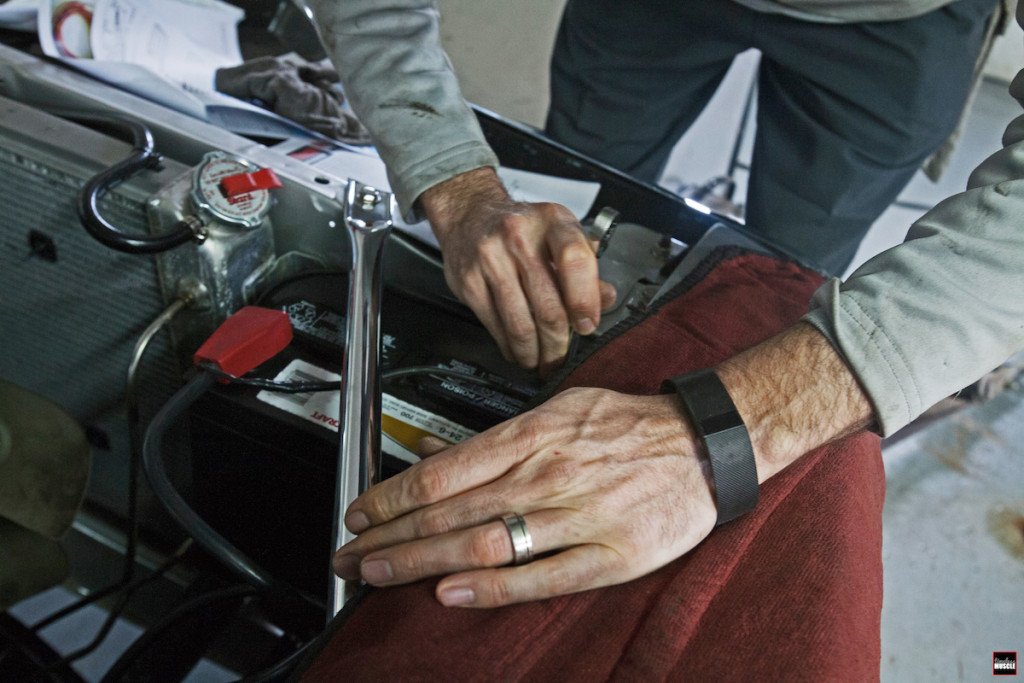
Before we tore into our Pontiac, we disconnected the battery for safety reasons and to ensure that we don’t have any issues with the electronics included in the kit. Remember, we’ll be installing O2 sensors, an electric fuel pump, a handheld controller, additional wiring harnesses and other electronically driven hardware.
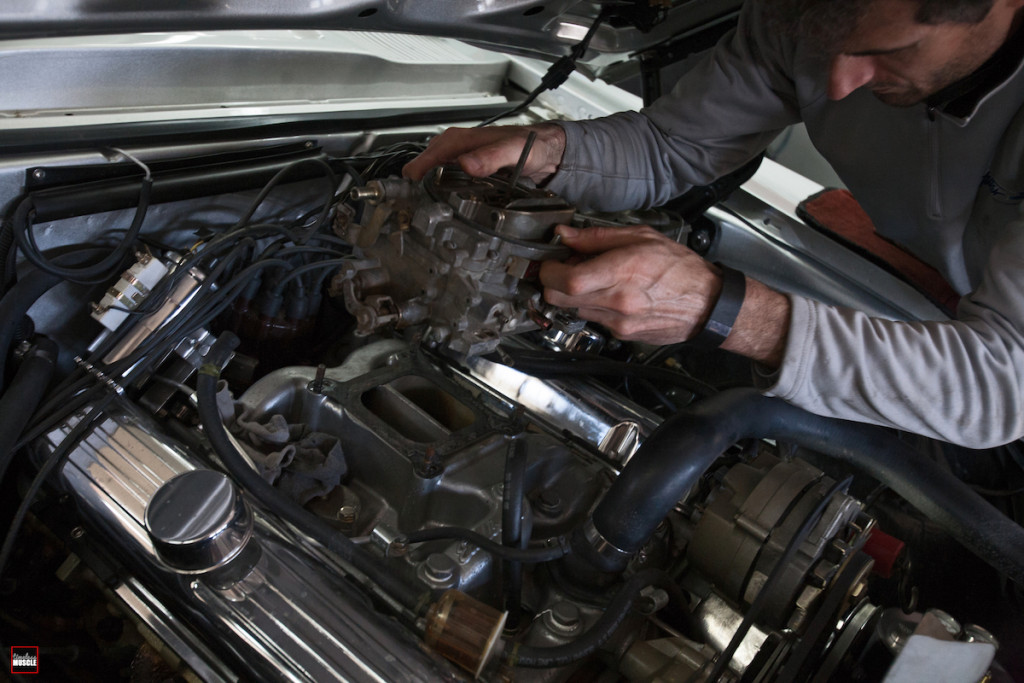
Pulling the old carb off was a great feeling; it was relatively problematic and flakey in the first place, and it was a sign of evolving Project Redo from an old-school relic, into a more modern, efficient and reliable performance machine. It’ll make a great paperweight!
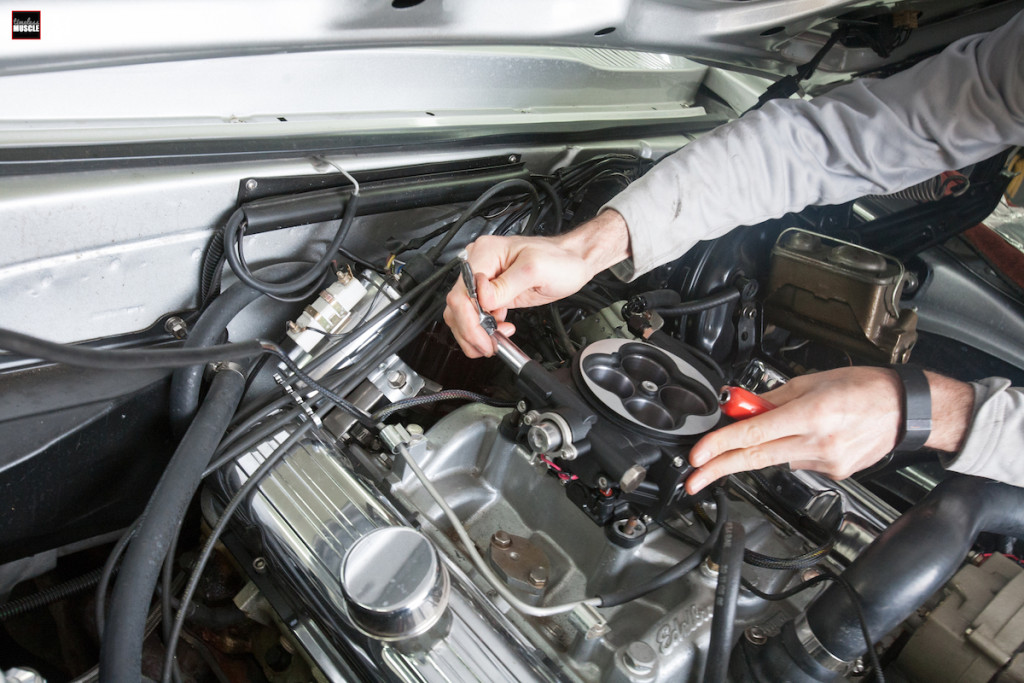
After we test-fit the throttle body to the intake manifold, we immediately realized that it wasn’t going to be a direct fitment after all; our spread bore intake manifold wasn’t in tune with the ports of the FiTech throttle body. That meant we needed a special gasket and spacers. While our parts runner ran to Summit (which is thankfully close to us and opened late), we went ahead and worked around it to do other tasks that awaited, including installing the fuel port plugs.
- The FiTech comes with a fuel return port plug that needed installed into be installed for our Fuel Command Center. Trevor coats the threading with anti-seize…
- …like so!
- The fuel plugs go into the front right corner, and in the two rear locations of the throttle body.
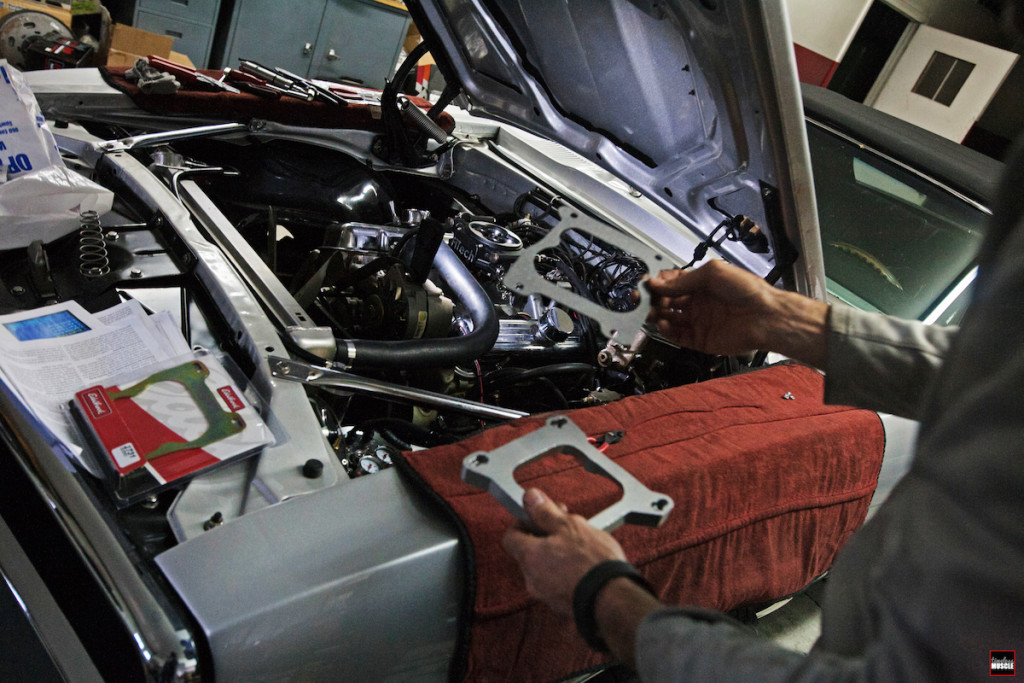
With the parts we needed now at our disposal, we had to swap in a new Edlebrock gasket that was made specifically for our intake, as well as a spacer to help the FiTech throttle linkage clear the intake’s runner. Our particular application called for Edelbrock PN-2731.
- The Common Center mounting bracket was the next step in our build, and without a flat spot to safely mount it to…
- …Trevor had to bend it a little to put it in place.
- A quick test fit later, and we wee good to go! The bracket comes with everything you need, mounting hardware.
- Afterwards, we slid it right into place and secured the Cammand Center into place.
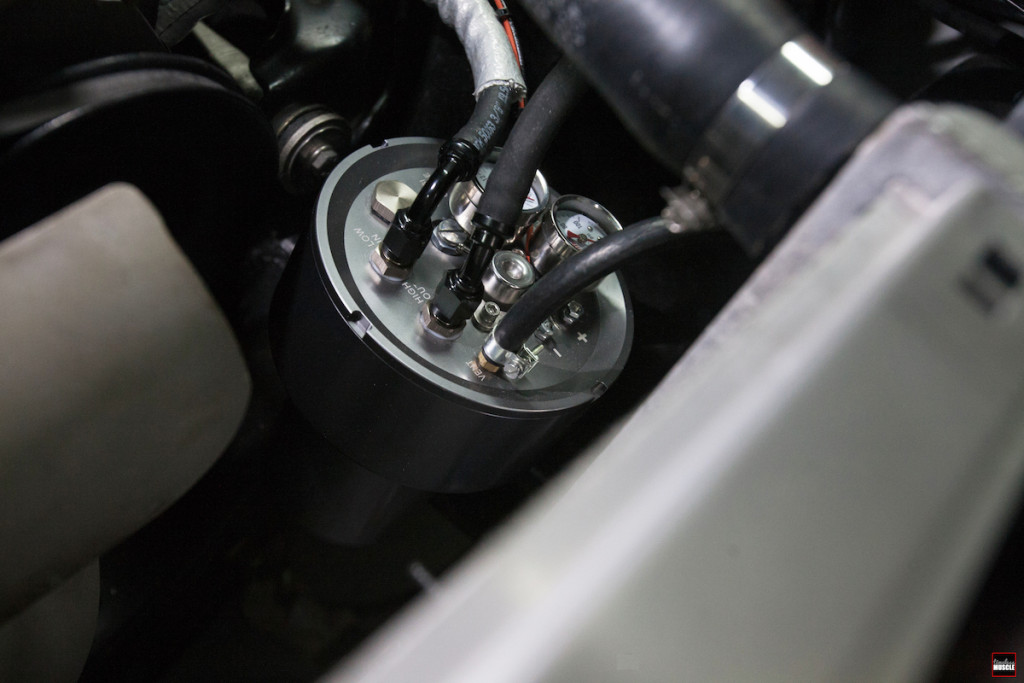
With all of our fuel lines connected and our Fuel Command Center ready for action. Dubbed the “ultimate in fuel delivery,” it’s the most efficient way to supply fuel to the throttle body without the use of a return line. Being a returnless system, it utilizes the stock fuel tank, fuel pump and inlet fuel line. There’s a fuel pressure regulator built into the command center, pre-set to 58-psi.
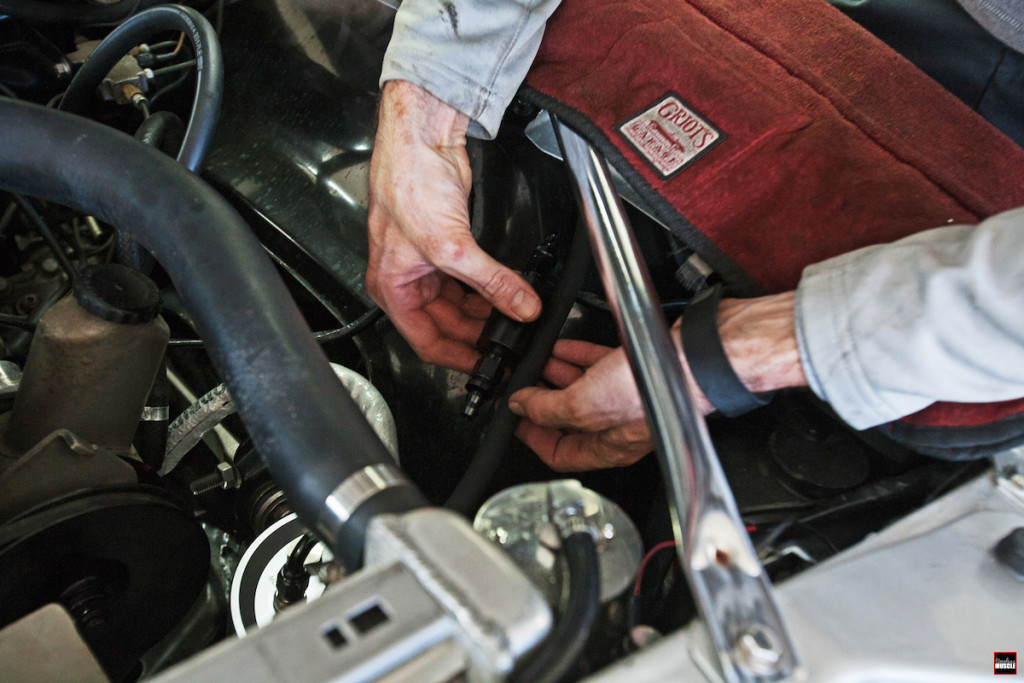
Picking a location to install the included fuel filter was quite easy; it had to run between the throttle body and the Command Center, and we wanted to be somewhere easily accessible, for future replacement or service. We also wanted it to be in a location with the most direct-flow possible, and that seemed to be in the corner of the engine bay just before the driver’s side wheel well.
- Underneath the passenger-side floorboard is where we welded in the O2 sensor bung, installed the señor and plugged it into the harness.
- You can see in this photo how it is mounted.
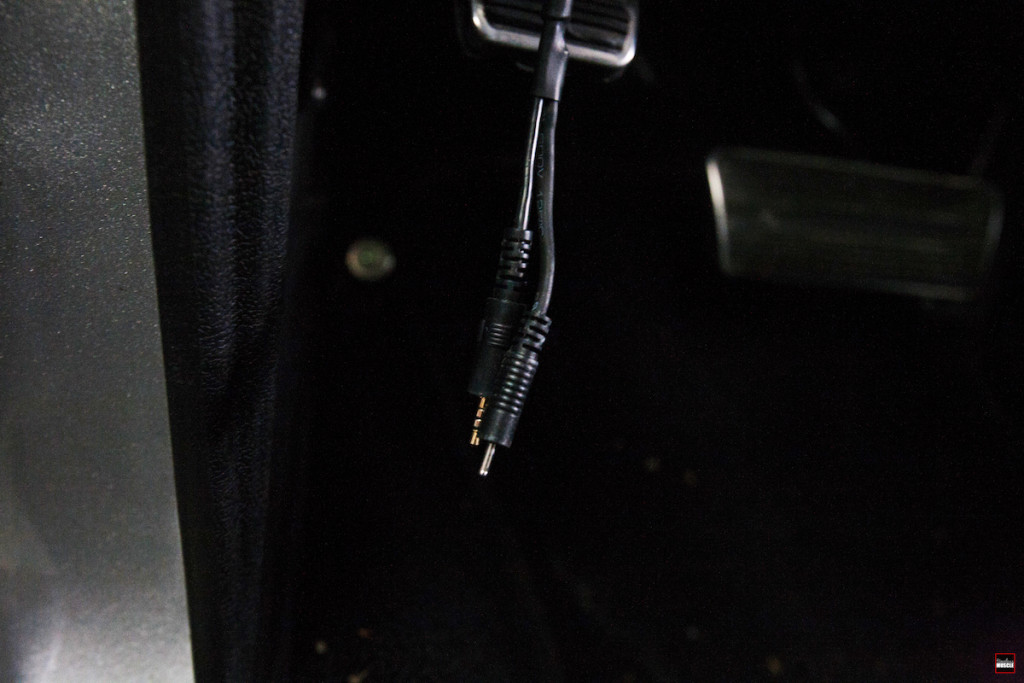
The Handheld Controller connects with two plug-in adapters, that we’ve run through the firewall and into the interior. You can route them any way you want for your vehicle, but we later tucked them under the kick panel and have routed the wiring to the counsel where the the FiTech handheld controller will live, hidden from view in a way to leave the interior completely stock-appearing. The kit also includes a windshield mount, for those who prefer to monitor your engine’s vitals and want the convenience of adjusting the system at your finger tips.
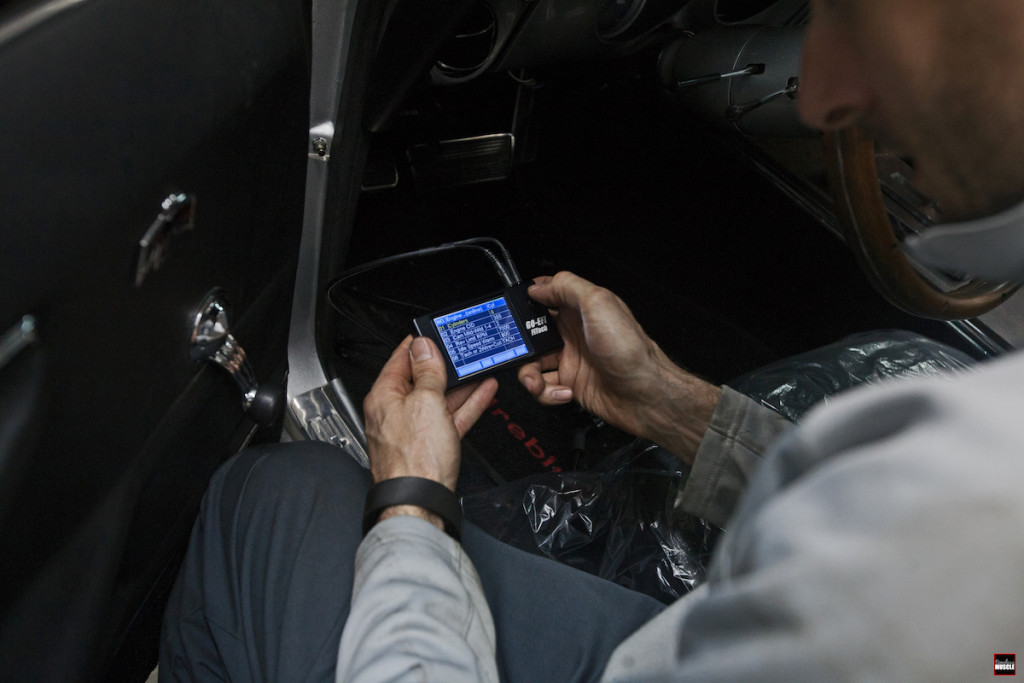
Setting up the FiTech system couldn’t be any easier; the digital display walks you through the process, as you select the number of cylinders, engine displacement in cubic inches, and so on. The software handles the rest!
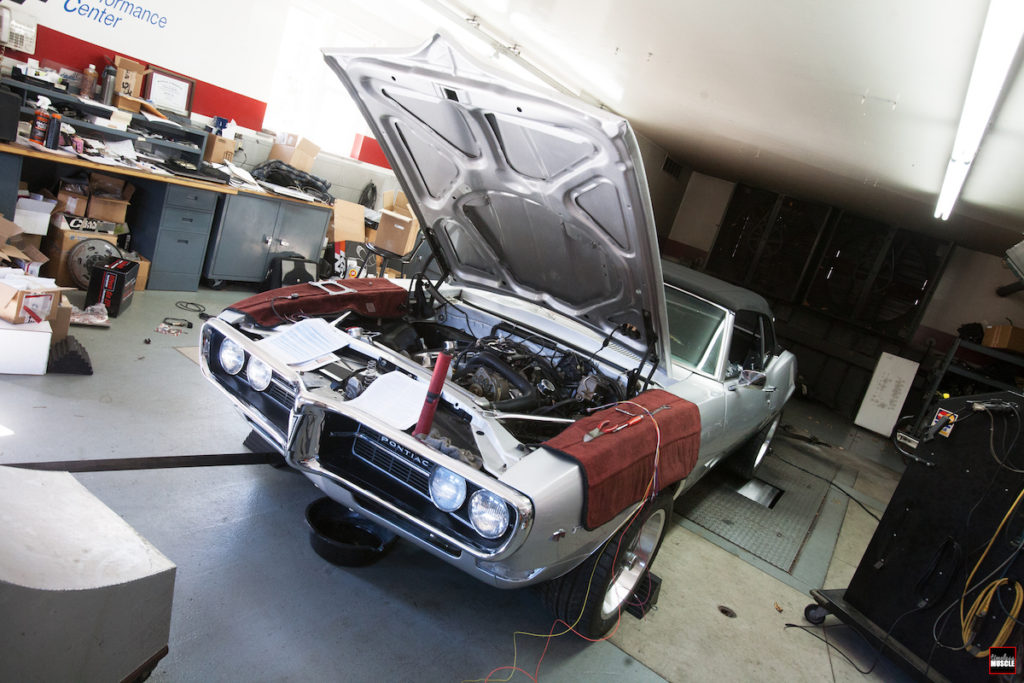
After a few sidetracking incidents, we started to get into the 12th-hour of our FiTech EFI install, but we were finally getting near the finishing line. All that was left was to do a systems check; check all of our lines, hoses and ensure that everything was tight. We intended on making a few more dyno pulls and we wanted to see how much power and torque our effort was worth.
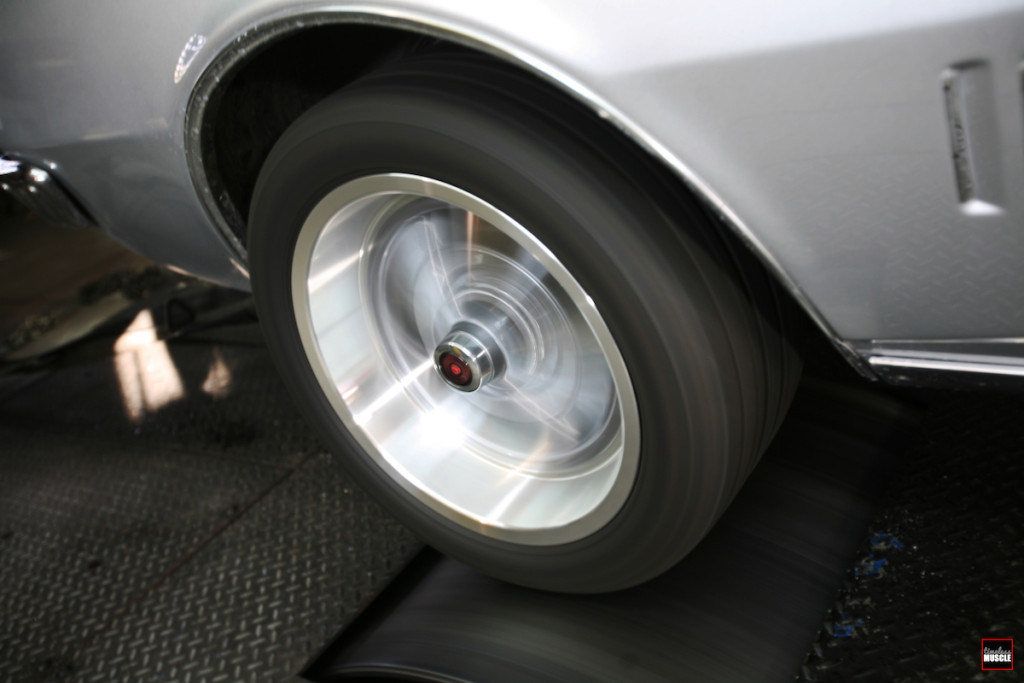
Once we let the Firebird cool down a little after our hour-long trek to Hutter Performance, we strapped the car down to their in-house in-ground chassis dyno to see just what kind of power this old ‘bird was putting down. As it turned out, our efforts weren’t wasted…

The results speak for themselves; with a baseline run of 213 hp and and 279 lb-ft. to the rear ties, our Firebird earned another 13 hp and 4 lb-ft. of torque after the FiTech kit was installed — totaling 226 and 283, respectively. Now please keep in mind, that the goal isn’t about an improvement in sheer power, but overall drivability, reliability and cold-starting capability. We’ve driven the ’68 Firebird for a solid three weeks after the FiTech kit was installed, and have not only noticed an improvement in the peak power, but the power increase could be felt throughout the power band, courtesy of our “driver’s seat dyno.” We’ve also seen an increase of close to 5mpg overall, without changing our driving style.
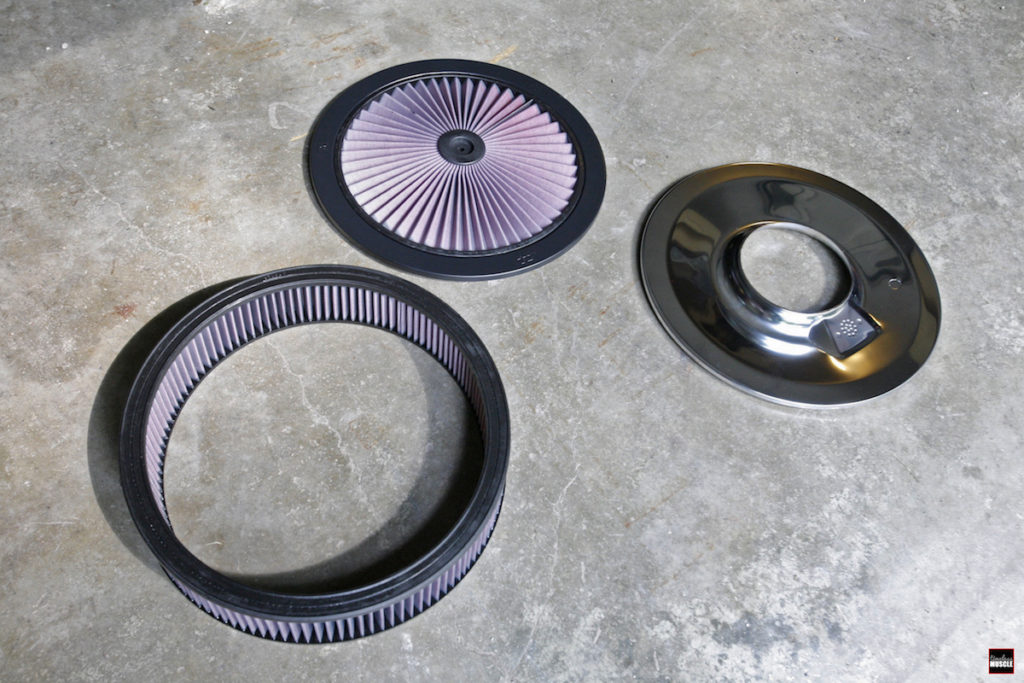
Since our factory air cleaner was a little restrictive for our taste, we decided to up the ante with a K&N unit. It came complete with a base, 14-inch diameter/2.5-inch tall filter element and the XStream air lid. These are available as a kit, in various height and diameter sizes.
- Going with a 2.5-inch tall air cleaner, with a 14-inch diameter, was the perfect fit for our Firebird. Any taller, and we would have had hood clearance issues.
- We wanted maximum flow, so instead of installing a chrome or painted air cleaner lid, we decided to use K&N’s Xstream air flow lid for maximum performance and function. Available in chrome, red or basic black like we chose, they are also available in various diameters. Since our lid is a black 14-inch diameter unit, it falls under part number 66-1401.
- It’s always best to make sure that your current carburetor stud measures just high enough to secure your air cleaner in place. After the switch from the stock carburetor, spacer plate and gasket install, as well as the aftermarket K&N filter assembly, we had to do some cutting of our own.
- With our carb study height sorted out, we tightened down our wing nut to secure the filter assembly in place.
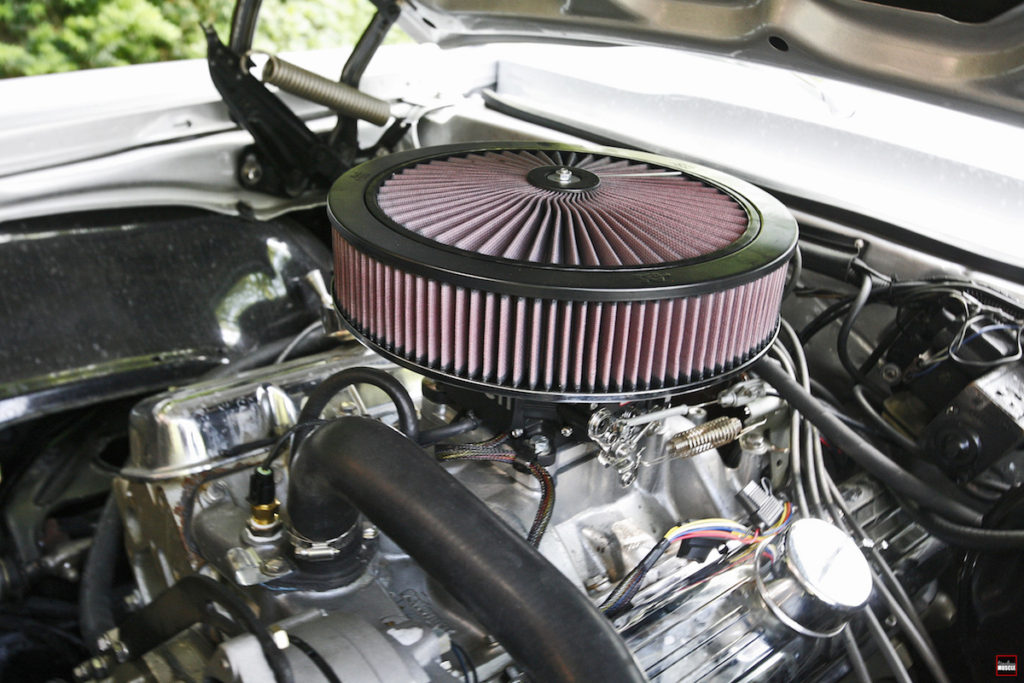
With our newly installed FiTech throttle body and fuel injection system providing ample power, performance and much-improved efficiency, in addition to our high-flow K&N filter kit, we’ve brought our ’68 Firebird into the 21st century. As you can see in the photo, the Fitech kit doesn’t look out of place in our engine bay, and might even throw off the casual observer at a local car show as a carburetor.

Rick Seitz is the owner and founder of AutoCentric Media, the parent company to Timeless MuscleCar Magazine, and has a true love and passion for all vehicles. When he isn’t tuning, testing, or competing with the magazine’s current crop of project vehicles, he’s busy tinkering and planning the next round modifications for his own cars.








